Makeda
Production
The Art of Rug Weaving
The making of a rug involves a long, complicated and delicate process, requiring skilled craftsmanship and years of experience. All Makeda rugs are produced in Nepal, where rug weaving constitutes an age-old tradition. Following the exodus of Tibetans into Nepal in the 1960s, weaving centres were set up to create job opportunities for Tibetan refugees, who brought with them generations of rug-weaving knowledge. Today’s weaving combines Nepalese and Tibetan traditions, and the rug industry is a prominent sector creating job opportunities for both Nepalese and Tibetans. The vital processes involved in the rug production are wool herding, carding and spinning, dyeing, weaving, trimming, washing and finishing.
The above film shows the production of the 4 sqm rug ”Färd” – 12 weeks of work summed up in 4 minutes.
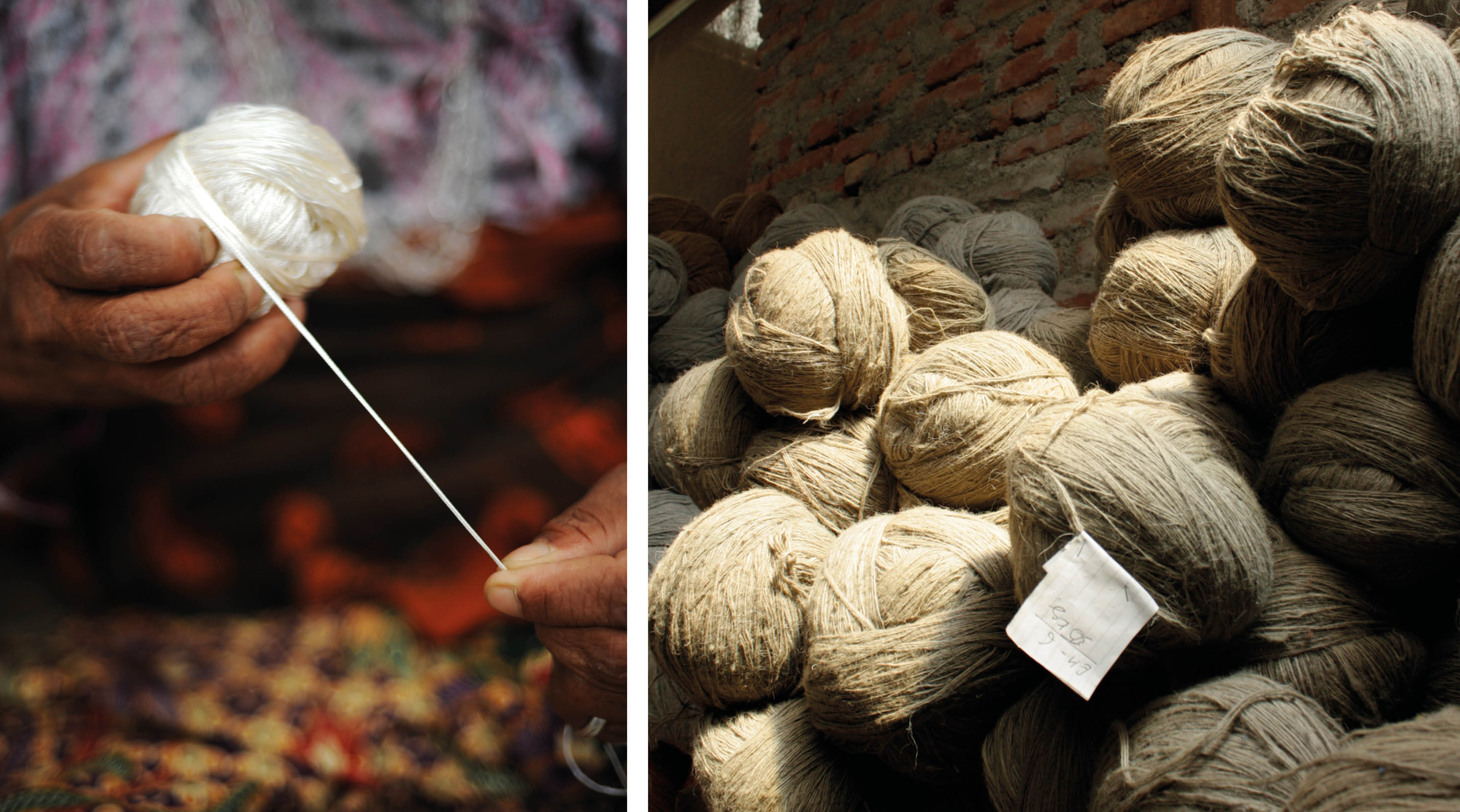
Wool herding, carding and spinning
All Makeda rugs are made of pure, natural materials – wool, silk, hemp and other plant fibres. Depending on pattern, each rug is made up of one or more of these materials in order to achieve an unique texture and appearance. Each rug design therefore varies in its composition. Wool is the main material used. It is brought to Nepal from the Tibetan highlands, where the sheep have over centuries adapted to the harsh climate. Their wool consists of long fibres and a high amount of lanolin oil, which aids the absorption of colours in the dyeing process and renders the rugs exceptionally soft and durable. Carding and spinning is done by hand which brings the yarn elasticity and strength.
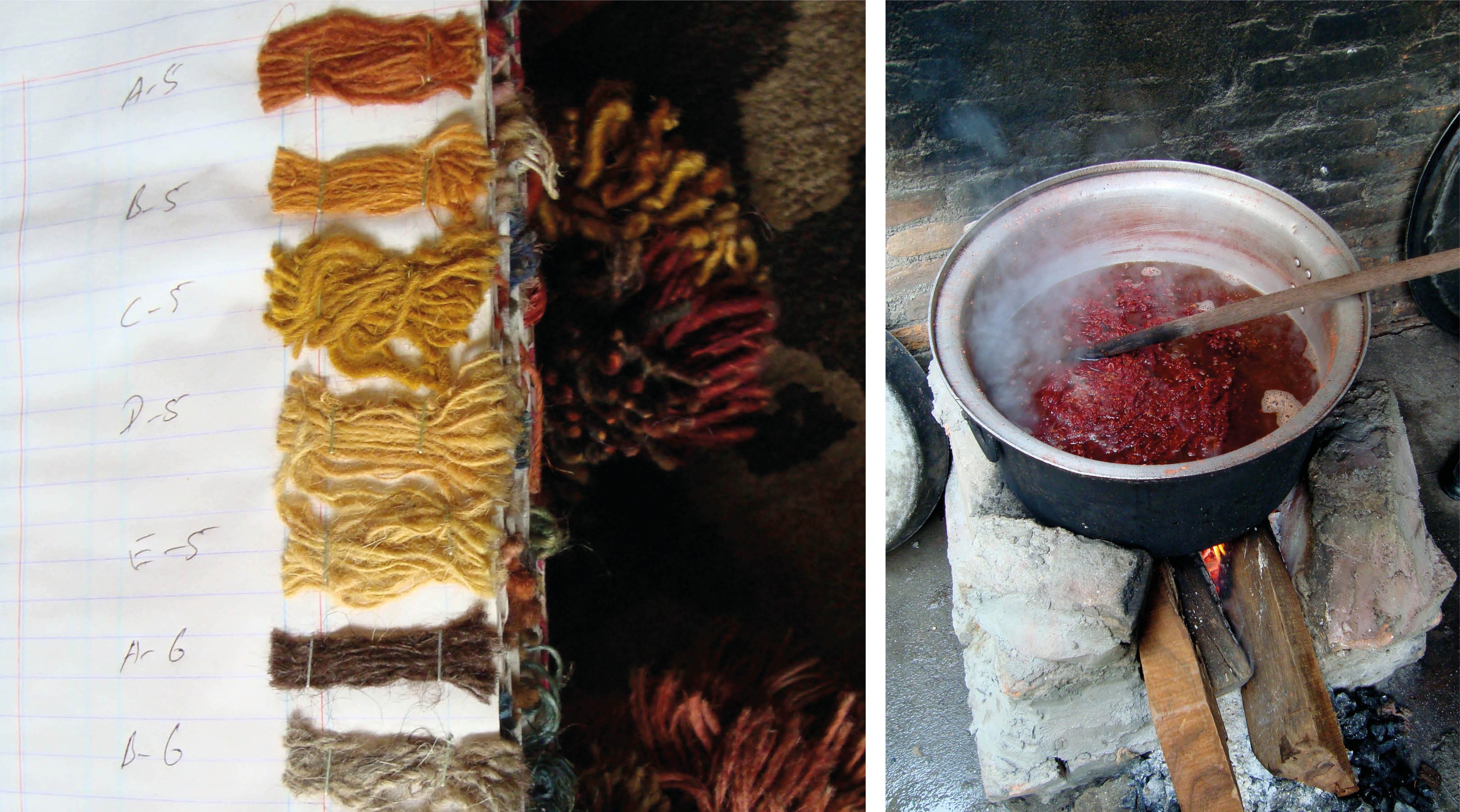
Dyeing
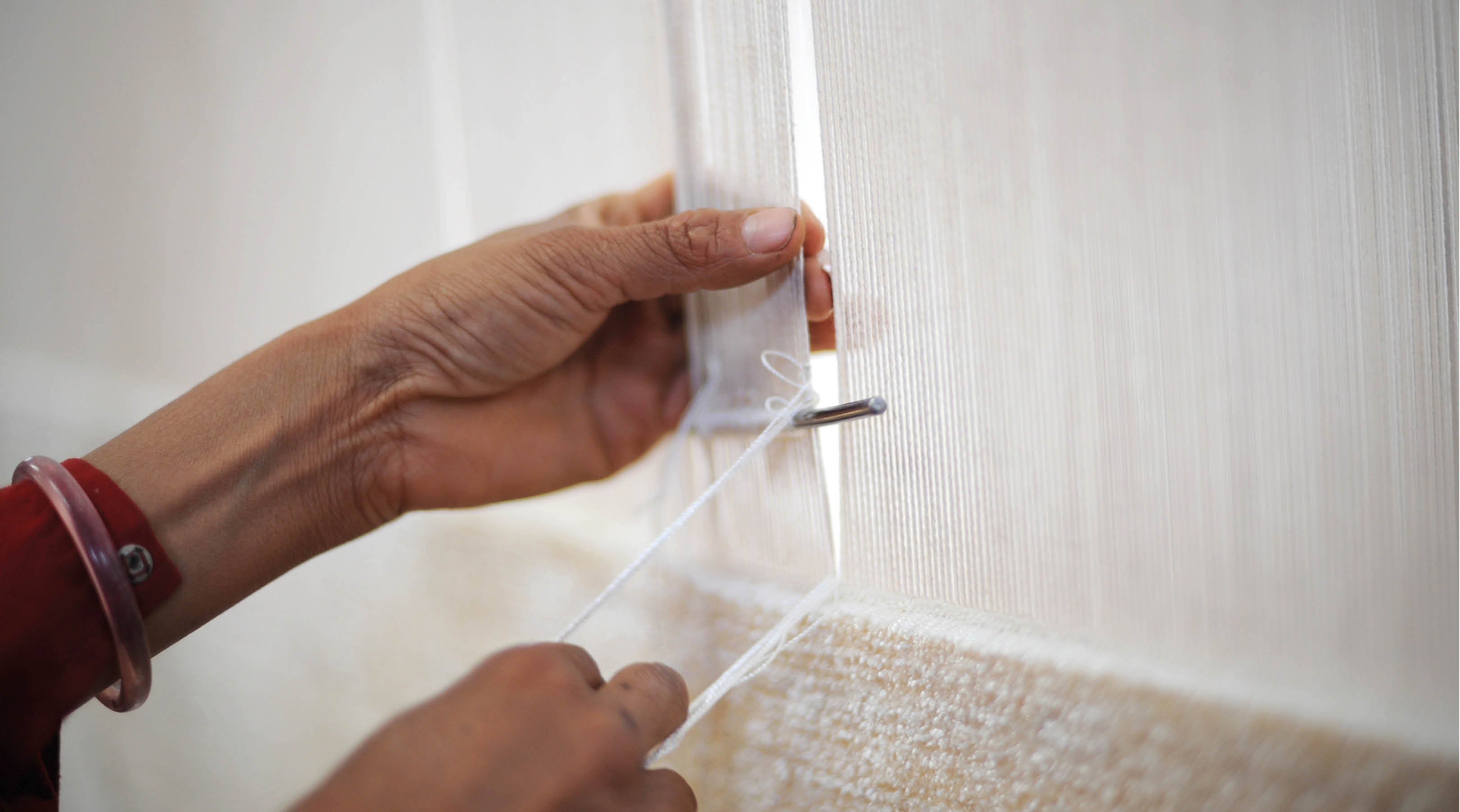
Weaving
The entire weaving work is carried out by hand with the traditional Nepalese-Tibetan knotting system on a vertical loom. Weaving Makeda rugs is a creative task, which is performed by three or four weavers depending on size of the rug. The Nepalese-Tibetan knotting system is unique – it has a particularly high density of knots, and produces a soft, thick and flexible weave.
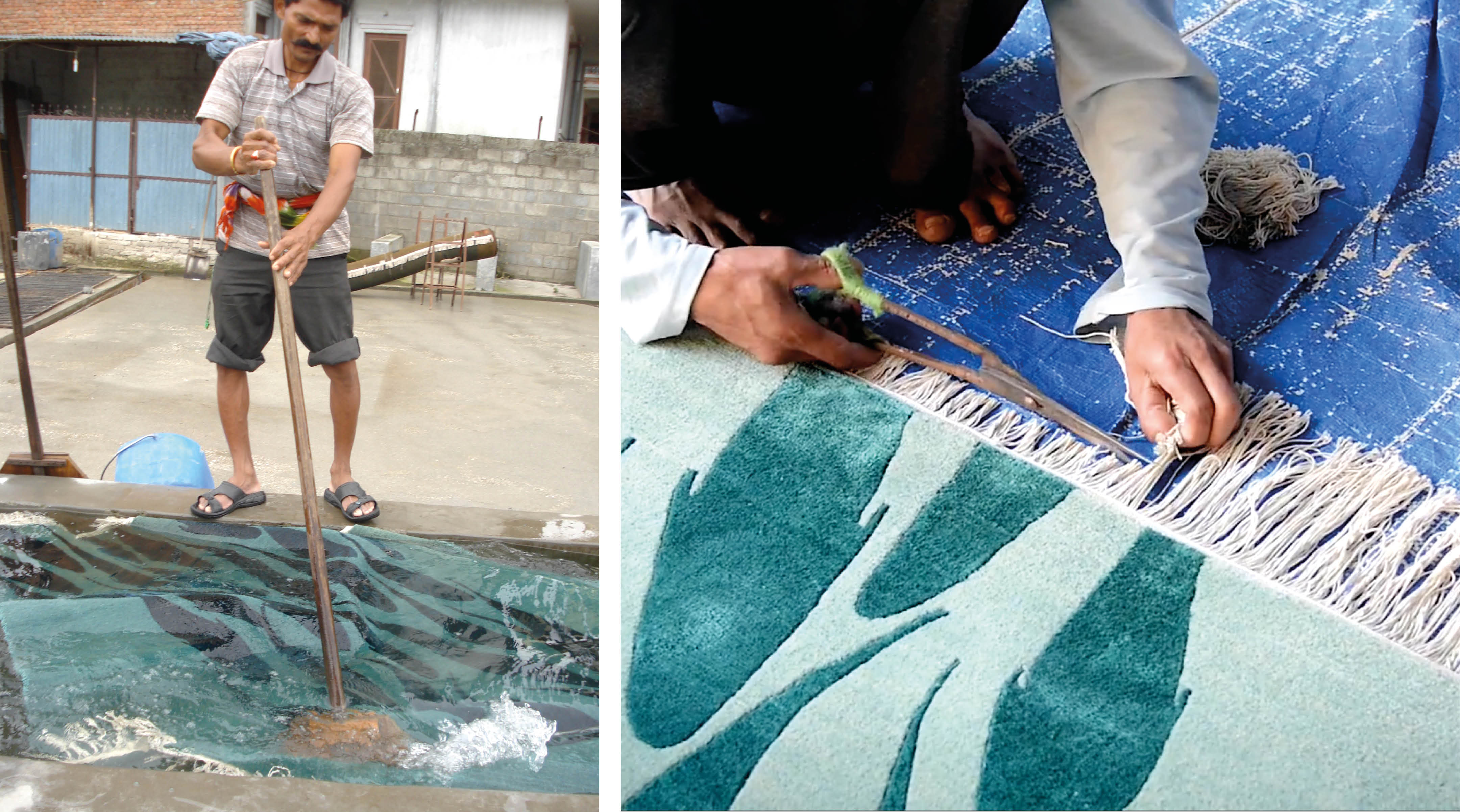
Washing, trimming and final finishing
After weaving, the entire surface of the rug is trimmed using hand scissors or by machine, depending on the design. Patterns and motifs are carved by hand using special scissors to emphasize their shape – this is a delicate process which requires great care and experience.
The rug is then washed to remove dirt and restore the original shine of the wool. The rug is dried out in the sun for 4-5 days. After drying, the rug is stretched from all four sides using metal frames and hooks in order to maintain the perfect rectangular shape of the rug.
The rug is then ready to be packed and shipped to the customer.
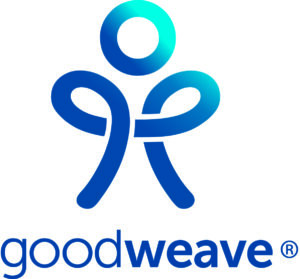
GoodWeave International is an international non- governmental organization working to end child labour in the handmade rug industry, and to offer educational opportunities to children in South Asia. The GoodWeave certification program provides an assurance that rug manufacturers, who voluntarily join as licensees and agree to its independent verification, adhere to the GoodWeave standards. The owner of the workshop in Kathmandu is a member of GoodWeave Nepal Branch. A percentage of the import cost is given to GoodWeave to support the continuous work of the organization.
Read more about GoodWeave here.